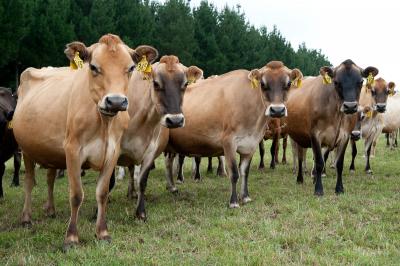Modern, science-based farming is the way to achieve a future for New Zealand where dairy farming has a lower environmental footprint, says DairyNZ’s chief executive, Dr Tim Mackle.
His comment follows today’s announcement of the Dairy Action for Climate Change at National Fieldays.
The Dairy Action for Climate Change lays down the foundation to reduce greenhouse gasses on dairy farms. The plan is spearheaded by DairyNZ, which represents all dairy farmers in New Zealand, and is in partnership with Fonterra. The plan has the support of the Ministry for the Environment and the Ministry for Primary Industries.
Dr Mackle says dairy farmers, and the scientists working alongside them, are serious about improving the environment.
“This plan lays down the foundation for dairy’s sustained, strategic approach to a lower carbon future. We’re taking the first steps in understanding what dairy can do – in conjunction with the wider agricultural sector, plus industry and urban communities – to help meet New Zealand’s Paris Agreement emissions reduction target.
“Our farmers are ready to work on lowering emissions – they are used to rising to the challenge, and they’re dedicated stewards of their land who want to do the right thing by the environment.”
Dr Mackle says addressing on-farm emissions – methane, which is formed when ruminant animals burp, and nitrous oxide, formed when nitrogen escapes into the atmosphere – is one of the most challenging issues facing the dairy and food producing sectors, globally and in New Zealand.
“Tackling the reduction of on-farm emissions is not going to be easy. It requires our Government and the agricultural sector to work together, and, as such the plan is an important part of a broader work programme underway.”
Fonterra’s Chief Operating Officer Farm Source, Miles Hurrell, says it is crucial to take an integrated approach to all the challenges facing dairy – from climate change and animal welfare, to the protection of waterways – and all the while maintain productivity and the profitability of dairy.
“The plan complements the environmental commitment dairy farmers have voluntarily undertaken through their work under the Sustainable Dairying: Water Accord.
“Some of their work – such as tree planting, better soil management and reducing nitrogen leaching therefore reducing the release of nitrous oxide – is already helping to address emissions. Then there are the other science-based endeavours that are well underway, like the research to breed cows that produce fewer methane emissions, and a methane inhibiting vaccine.”
Dr Mackle adds that the Dairy Action for Climate Change dovetails with the work of the Biological Emissions Reference Group (BERG), a joint sector and Government reference group. The BERG’s purpose is to build robust and agreed evidence on what the sector can do on-farm to reduce emissions, and to assess the costs and opportunities of doing so. The BERG’s final report in late 2017 will be necessary to inform future policy development on agricultural emissions.
“New Zealand’s agricultural output of greenhouse gas is accentuated because we have a relatively small population, and we are not heavily industrialised. In other countries where there are larger populations the greater contribution is from the transport, manufacturing, construction, and energy sectors.
“Our agricultural sector is a very efficient producer of high-quality food – food that feeds many millions, not only in our country, but also around the world.”
New Zealand is acknowledged as a world-leader for efficiently producing milk on a greenhouse gas per unit of milk basis, as identified in a 2010 report from the United Nation’s Food and Agriculture Organisation.
Dr Mackle says this positioning is the result of New Zealand dairy cattle being healthier and largely grass fed, unlike animals in many other agricultural countries which are fed grains and other supplements that are harvested and transported. Added to this, their animals are often housed in barns, sometimes year around, not just over the winter months.
The Dairy Action for Climate Change was launched during the opening of the 49th National Fieldays by Deputy Prime Minister Paula Bennett.
| A DairyNZ release || June 14, 2017 |||

